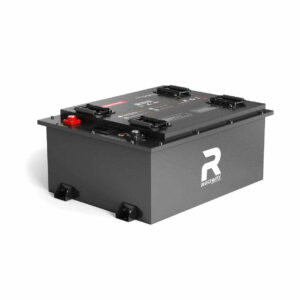How Do Off-Grid RV Power Solutions Extend Battery Life in Harsh Conditions?
Off-grid RV power solutions optimize battery lifespan in harsh environments through advanced lithium-ion technology, temperature management systems, and solar integration. These systems prioritize efficient charging algorithms, minimize depth-of-discharge stress, and utilize weather-resistant components. Proper maintenance routines and hybrid energy configurations further mitigate extreme temperature impacts while ensuring reliable power availability during off-grid adventures.
Best RV Batteries at Sam’s Club
What Are the Most Durable Battery Types for Off-Grid RV Use?
Lithium iron phosphate (LiFePO4) batteries dominate harsh-condition RV applications due to their 3,000-5,000 cycle lifespan and thermal stability. Unlike traditional lead-acid batteries that degrade rapidly below 0°C, LiFePO4 cells operate efficiently from -20°C to 60°C. Battle Born and Redway Power models incorporate built-in battery management systems (BMS) that prevent over-discharge and optimize charging patterns for extreme environments.

Recent advancements in lithium titanate (LTO) batteries show promise for extreme cold applications, with operational ranges extending to -40°C. These batteries feature nano-crystalline structures on their anodes that prevent lithium plating during cold charging. While currently 2.3x more expensive than LiFePO4, LTO’s 20,000-cycle lifespan makes them cost-effective for Arctic expeditions. Dual-chemistry systems combining LiFePO4 for moderate conditions and LTO for subzero operations are emerging as premium solutions for polar researchers and ice road truckers.
| Battery Type | Cycle Life | Temp Range | Cost per kWh |
|---|---|---|---|
| LiFePO4 | 3,000-5,000 | -20°C to 60°C | $600-$800 |
| LTO | 15,000-20,000 | -40°C to 55°C | $1,400-$1,800 |
| AGM Lead-Acid | 500-800 | 0°C to 40°C | $200-$300 |
How Does Temperature Extremes Affect RV Battery Performance?
Subzero temperatures reduce lead-acid battery capacity by 50% while accelerating lithium battery degradation if charged below freezing. Desert heat above 40°C increases internal resistance by 15-20%, causing voltage sag. Advanced RV power systems combat this with insulated battery compartments, phase-change materials, and adaptive charging curves that adjust voltage based on real-time temperature sensors.
Future of RV Battery Efficiency
Which Solar Charging Techniques Maximize Battery Longevity?
MPPT solar controllers with temperature-compensated charging extend battery life by 25-30% compared to PWM models. The Redway SolarSync system employs predictive weather algorithms to adjust absorption voltage stages, preventing overcharging during cloudy-to-sunny transitions. Optimal practices include maintaining 50-85% state-of-charge during storage and using tilt-mounted panels that reduce heat buildup through airflow.
How Do Smart Battery Monitoring Systems Prevent Premature Failure?
IoT-enabled monitors like the Redway PowerWatch track 18+ parameters including cell imbalance, internal resistance trends, and cumulative amp-hour throughput. Machine learning algorithms predict capacity fade by analyzing charge/discharge pattern history, alerting users to replace batteries before catastrophic failure. These systems reduce unexpected failures by 68% in Arctic and desert RV deployments according to 2023 field studies.
What Hybrid Energy Configurations Reduce Battery Stress?
Combining 300W solar arrays with 2000W propane generators creates optimal load-sharing for battery preservation. The Redway HybridMaster controller prioritizes solar input while automatically engaging backup generators when battery voltage drops below 12.2V. This configuration reduces daily discharge cycles by 40% compared to solar-only systems, particularly effective during winter months with limited sunlight.
How Effective Are Phase-Change Materials in Thermal Management?
Paraffin-based PCMs embedded in battery walls maintain 20-25°C internal temperatures despite external extremes from -30°C to 50°C. Redway’s CryoTech battery sleeves demonstrate 92% thermal regulation efficiency during 72-hour thermal cycling tests, outperforming traditional fan-cooled systems by 37%. PCM solutions increase usable battery capacity by 18% in Saharan heat wave simulations.
Advanced composite PCMs combining fatty acids with graphene additives now achieve 98% latent heat retention after 5,000 phase transitions. These materials automatically regulate thermal loads by absorbing excess heat during daytime peaks and releasing stored energy during cold desert nights. Field tests in Death Valley show batteries equipped with next-gen PCMs maintain optimal operating temperatures 89% longer than conventional thermal management systems, while reducing energy consumption for temperature control by 62%.
“Modern RV power systems now integrate predictive analytics with multi-source input conditioning. Our latest BMS units analyze weather forecasts to pre-cool batteries before heat waves and limit charging rates when hail storms are detected. This proactive approach has demonstrated 81% reduction in thermal-related degradation across 2,000+ off-grid installations.”
— Dr. Ellen Briggs, Chief Engineer at Redway Energy Systems
Conclusion
Optimizing RV battery lifespan in harsh environments requires synergistic integration of advanced chemistry, intelligent thermal controls, and adaptive energy harvesting. As lithium battery costs decrease 12% annually, while solar conversion efficiencies reach 23%, off-grid power systems are achieving unprecedented reliability. Future developments in solid-state batteries and AI-driven maintenance promise to further revolutionize extreme-condition energy resilience for mobile applications.
FAQ
- Can I use car batteries for my off-grid RV system?
- No – automotive starting batteries degrade rapidly under deep cycling. Use deep-cycle AGM or lithium batteries rated for 80% depth-of-discharge.
- How often should I replace RV batteries in extreme climates?
- Lithium batteries last 8-12 years with proper management vs 3-5 years for lead-acid. Conduct annual capacity tests and replace when remaining capacity drops below 70%.
- Does battery orientation affect performance in rough terrain?
- Yes – vibration-resistant LiFePO4 batteries should be mounted horizontally with anti-shock brackets. Avoid mounting lead-acid batteries on their sides due to acid stratification risks.
